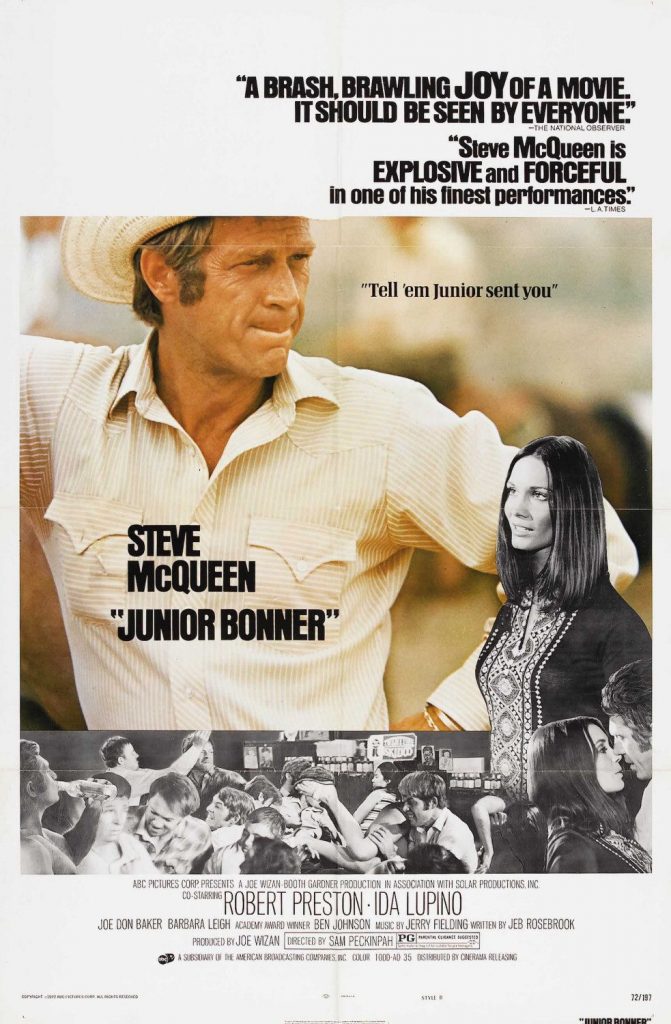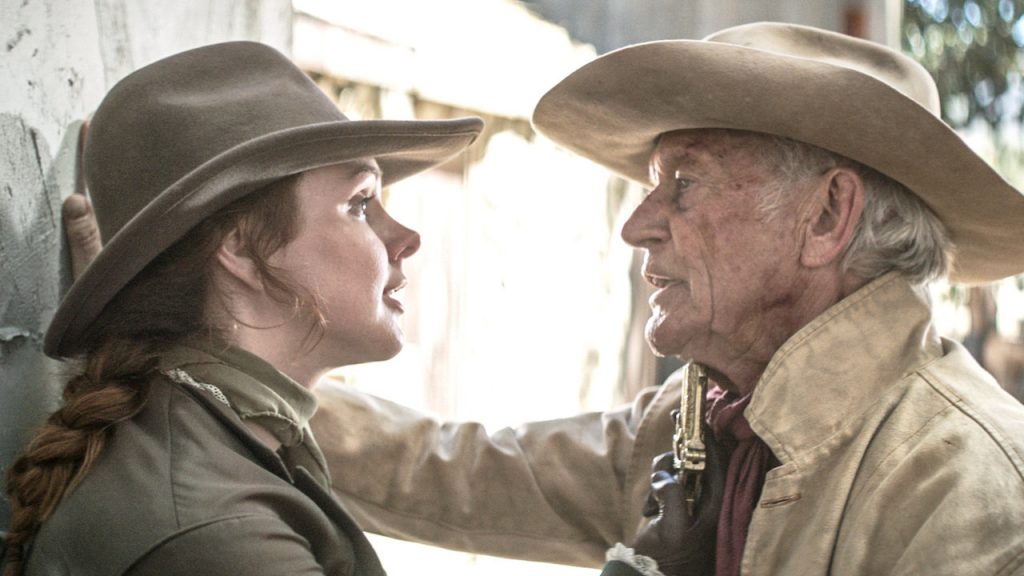Each Monday, I share reviews of Westerns I’m studying to prepare for making 12 Westerns in 12 Months during 2020. I am watching these films not from an audience perspective but as a filmmaker, as a student of the genre.
Week Seventeen: Junior Bonner & Gone are the Days
Junior Bonner

What struck me most about Peckinpah’s Junior Bonner was how light the whole thing feels. I knew going in that this was his film without violent, with bloody gun battles, but I was not prepared for something with this much levity.
It’s refreshing to see the director work away from the dark, fateful landscape of heroes who usually fill his work, though these heroes have a fate too, one that we all face more often in life than bullets: to repeat our mistakes over and over again. But that also seems accurate to the rodeo world. You win. You loose. You fall off the bull. You get the prize. You screw the girl. You go to the next town and do it all over again. I think he captured the spirit of that world.
In terms of the performances, everyone is here to do their jobs and they do it. McQueen leads. Joe Don looks mean. Preston cons his way through the picture, playing the kind of role he fits like a glove. If anything, I wish there were a couple more scenes with Ida Lupino. The great lady filmmaker is a surprising casting choice on Peckinpah’s part but a good one.
One of my collaborators also watched the film and I think was driven crazy by the cinematography and cutting. My immediate thought was, “Well, that’s just Peckinpah.” It’s like watching a David Lynch film and expecting there to be no weirdness. But I suppose jumping into Junior Bonner without any homework about the director’s work might be a little shocking. His stylized use of slow motion photography and fast cutting can be overdone but I don’t think it is here. Some riders have told me that the time on a bucking horse or bull feels much longer than the eight or less seconds it should, like you’re holding on for minutes, hours. Therefore, Peckinpah’s style might be more fitting here than in any other film he made, perfectly capturing the rodeo in real time and internal time.
Seen on DVD.
Gone are the Days

Watching this new Western just made me wonder why most recently made films of the genre aren’t as good as pretty much any other era of Westerns from the silent age to the 90s. But I’ll get into that in a bit. First, a few comments directly about this film:
For about a quarter of Gone are the Days, I thought Lance might actually be dead already, that this was some kind of Western world purgatory where he is forced to revisit the good and past of his past. That might have been predictable but it certainly would have been more interesting that what followed.
I felt this film fall apart step by step, minute by minute. Any intrigue or mystery it holds in the first thirty minutes quickly evaporates. Lance’s original plans to rob a bank turn out to be far more interesting than his more ethical quest which just never finds its touch. Berenger’s character has promise with his introduction but totally fizzles as the narrative plays out. In fact, as the movie nears its “climax”, things get downright unintentionally silly between Berenger and the film’s pervert bad guy in a jail house argument.

The shoot out is clumsy and everything is altogether too clean. The final shot is blown. Did he just ride in circles? That’s not a way to send off your hero. Sheesh.
Okay, back to my brainstorming about 21st century westerns. While watching this film, my mind was occupied with thoughts of why this era of Westerns (of course, there are exceptions) just isn’t as strong. Here are a few ideas:
1. The writing is all text and no subtext. I don’t think there’s a single line in this movie that isn’t literal and that’s the case with almost every modern Western I see.
2. The cinematography is based on making things look cool or scenic but not about complimenting the story/characters. The shots don’t connect to the psychology of the characters or to help create a cohesive mood/style for the piece.
3. Landscape is used just as a backdrop rather than a character and a reflection of the characters. In all great Westerns, the landscape is as important as the people and often reveals their inner landscape.
Those I think are the main failings of this era. Of course, there are plenty of exceptions like Slow West, Bone Tomahawk, Appaloosa, and most recently The Kid. But back in the day, even the “B-Westerns”, the less noticed ones, had more of an aesthetic, more subtext, and were overall better films than these.
Seen on DVD.
Support our 12 Westerns project by donating five dollars or more on our GoFundMe fundraiser.
-Travis Mills


